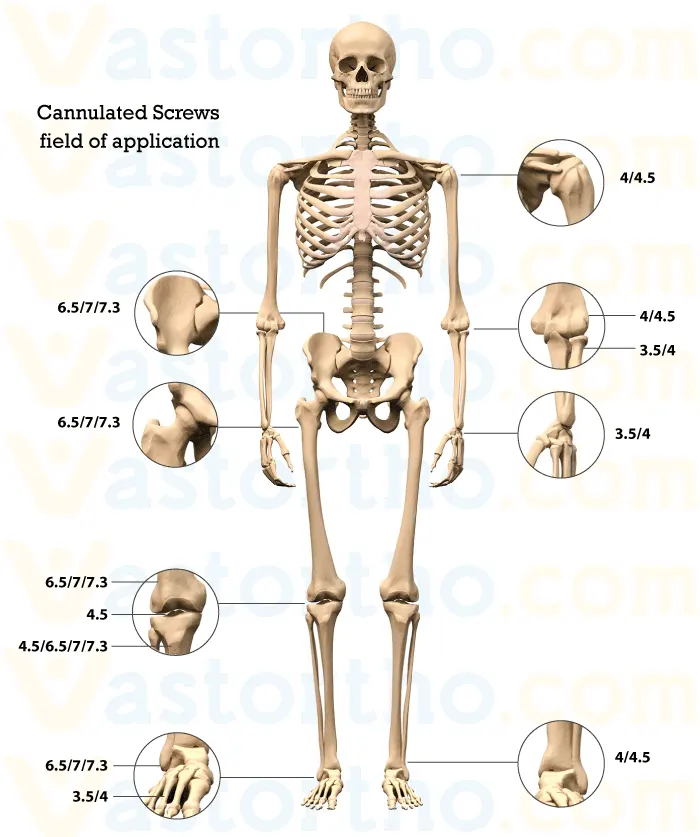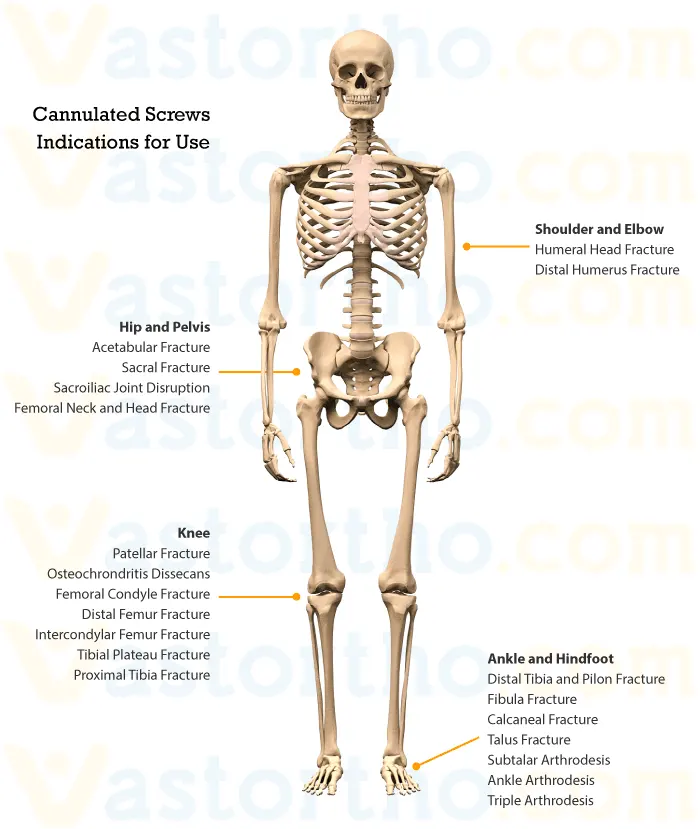7.3 mm Cannulated Screw Specification, Uses & Sizes

7.3 mm Cannulated Screw Specification
- 7.3 mm Cannulated Screw available lengths are 25mm, 30mm, 35mm, 40mm, 45mm, 50mm, 55mm, 60mm, 65mm, 70mm, 75mm, 80mm, 85mm, 90mm, 95mm, 100mm, 105mm, 110mm, 115mm, 120mm, 125mm and 130mm
- 7.3 mm Cannulated Screw has Cancellous thread. Cancellous thread profile uses deep cutting threads with a large pitch to increase resistance to pullout. Large pitch also accelerates screw insertion and removal.
- 7.3 mm Cannulated Screw is made from pure Titanium and SS 316L.
- Any additional length sizes of this screw will be made on demand.
- This is Self Tapping & Self Tapping Screw. Self Tapping & Self Tapping Screw cuts its own thread while being driven into the bone. It makes a small hole while entering the bone which creates a tight friction fit between the threads. This helps fight
vibration loosening and allows the parts to be taken apart if needed. - Choice of thread lengths offers best fit of threads into far bone fragment, for greater interfragmentary compression.
- Reverse-cutting flutes assist in screw removal.
- Self-drilling, self-tapping screw tip facilitates screw insertion by eliminating the need for predrilling and tapping in most cases.
- Instruments are available for this screw such as Bone Taps, Combined Drill & Tap Sleeve, Counter Sink, Depth Gauge, Drill Bits, Drill Guide, Drill Sleeve, Hollow Mill Screw Removal, Reverse Measuring Device, Screw Drivers and Screw Holding Forceps etc.
7.3 mm Cannulated Screw uses
7.3 mm Cannulated Screw is intended for fixation of fractures, fusions, and osteotomies of Small and large bones appropriate for the size of the device.
Cannulated screw have a hollow central shaft. Both cortical and cancellous screws can be cannulated. Cannulated cancellous screws are used for metaphyseal fractures while cannulated and noncannulated cortical screws are used as lag screws for fixation of diaphyseal fractures.
Partially threaded screws may be used to lag one bone fragment to another, where the bone fragment is captured by the threads of the screw and pulled toward the near cortex fragment on the head side of the screw. Fully threaded screws are intended to be used to stabilize fractures with little to no compression across the fracture.
Cannulated screw system provide emergency closed reduction, percutaneous screw fixation and excellent stability.
Cannulated bone screws in comparation with traditional screws decrease surgical time, allow more precise screw placement and reduce possibility of errors.
One special type of cannulated cancellous screw is the Knowles pin which is a Cannulated screws used for fixation of slipped capital femoral epiphysis in children.













